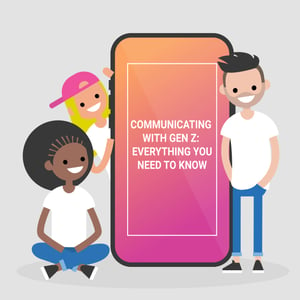- SERVICES
- HIGHER EDUCATION MARKETING
- ENGAGEMENT & ENROLLMENT MANAGEMENT
- STUDENT RECRUITMENT AGENCIES
- PROFESSIONAL EDUCATION & TRAINING
- WHO WE ARE
WHO WE ARE
Learn more about Keystone Education Group, including our leadership structure, why choose Keystone as your educational partner, and company press releases.
QUICK LINKS
- RESOURCES
RESOURCES
Find a range of helpful resources to help with your educational marketing. From on-demand webinars, reports & data, to customer testimonials and our downloadable media kit.
QUICK LINKS
- NEWS
- REQUEST A CALL

- Keystone Higher Education News
- How to Close the Gender Gap in Computer Science
The history of computer science is a history of the innovations and hard work of women. For every Ada Lovelace or Grace Hopper, countless unnamed coders and designers have toiled to develop the systems on which today’s world operates: indeed, it has become almost a truism to point out that the industry originally considered computer programming to be ‘women’s work.'
Yet in education and in industry today, women are woefully underrepresented. While the reasons behind this are complex – the phenomenon can in part be traced from the masculinized marketing of the first home computers to the tech bro fraternity today, and the self-perpetuating culture in between – the figures tell their own story. In the UK today, only 9% of girls schools offer computing at A-level, versus 44% of boys schools. At the undergraduate level, women made up 14% of 1971’s intake in the subject, which rose to 37% by 1983 – only to sink back to 18% by 2010.
In the States, similar trends have taken their toll on the workforce. Women in computing roles fell by 13% between 1995 and the beginning of this year, prompting the Washington Post to suggest that, as the digital sector expands, the continuing trend will ultimately leave the American workforce short of the overall requirement for STEM workers.
Computer science is, then, a numbers game in more than one respect of the term – and universities are ideally positioned to begin to combat these statistical trends. Taking deliberate steps to improve diversity at point of admission is one way to encourage a healthy mix. In the UK universities are paring positive action for gender balance with long-term targets aimed at gender parity throughout all fields of study. Targets (rather than quotas) and the reflection of the desired diversity among those who make the selection are a good start, but successful initiatives, like Powers Education, show that marketing tone is also important. Putting more of an emphasis on the global impact of STEM work and on employment links can make the prospect of such a course more enticing to female students.
Another tactic taken by some universities is to acknowledge that gender disparity in STEM doesn’t start at the university level. In the UK fewer girls complete A-level subjects that would usually qualify them for enrollment in STEM courses. Efforts are being made to increase girls’ engagement with STEM and programming at the primary and secondary levels, but in the meantime universities in the UK are moving away from math and physics A-level requirements for entrance to computer science and other STEM courses, focusing instead on introducing these subjects throughout the course. In STEM fields, these tactics have proved successful, suggesting a move towards evaluating all students’ achievements in the context of cultural issues could not only improve university enrollments of women in STEM, but address issues of gender imbalance throughout university systems.
Cultural, practical, and pedagogical strategies have their part to play, and one key to shifting the imbalance is in representation. Everyone benefits from strong role models and inspiring mentorship, but this is especially the case for women in STEM faculties, particularly those in computer sciences. Correcting the disproportionate number of men in STEM fields can have a twofold effect: on the one hand, unconscious bias can lead to fewer women enrolling in or flourishing in subjects perceived as ‘masculine’ or where male faculty predominate; on the other, male faculty members may be less likely to select, value, or support female students – or colleagues. Institutions that establish smart, sensitive mentorship programs in which each student is supported to find and work with a mentor who has followed a similar path to that to which the student aspires are likely to observe positive developments in the culture and profile of the faculty and in the confidence and results of their female cohort. Such an approach can help to strengthen networks and engender the interest and the courage to attend conferences organized for women in STEM, such as Global Women In STEM and Women In Science and Engineering.
As MIT’s success in leveling the gender gap in mechanical engineering demonstrates, social media is an ideal tool for sharing success stories and connecting women who are passionate about the sciences. From an inspiring selfie to a viral hashtag, the beauty of social media is that it not only tells a story but also facilitates a conversation – one that is sorely needed. The importance of visibility and awareness in attracting women to STEM programs and roles cannot be overstated and universities and STEM programs can use a variety of content-based marketing strategies to promote and participate in initiatives aimed at gender equality in science and technology.
And these ideas should not be left to filter down to the youngest science enthusiasts, but instead targeted at girls of high school-age and even younger. A sense of self-belief and of the desirability of entering this potentially forbidding industry can be instilled as soon as a girl picks up a science book, a calculator or a Raspberry Pi. Nurturing this passion in the hearts of our up-and-coming STEM enthusiasts will have a tremendous impact on individuals, institutions, and the industry that so urgently needs their contribution.
More about:
Related Tags
Just For You
Top Picks
Higher Ed Chats Podcast
Listen to the latest episodes of our Higher Ed Chats Podcast - new format for 2024. Hear from Higher Ed thought-leaders from around the world!

Webinar: Dos & Don'ts of Higher Ed Social Media
.png?width=500&name=Social%20Media%20Webinar%20March%2024%20Banners%20(3).png)
Join our live webinar on 27th March to hear from a panel of Higher Ed Social Media experts.
Subscribe
to get the latest news and updates





